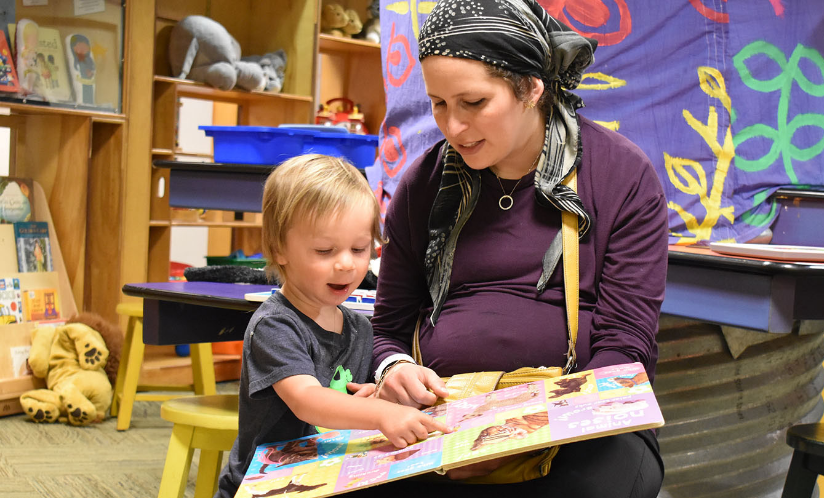
The author of this article, Shelby Hiken, M.Ed, is a Senior Education Specialist at Port Discovery Children’s Museum.
Spoken language, the foundation for both reading and writing, is something children internalize instinctively. Children absorb sounds, words, syntax, sentence structure, and grammar through listening and communicating with others. This process of absorption makes promoting rich spoken language experiences essential to the development of speaking, reading, and writing. While children develop spoken language without effort, writing and reading are skills that we need to teach directly. The process of learning to read and write involves preparation and consistent practice. Here are some pre-reading activities you can use to inspire and prepare children for the actual tasks of reading and writing.
Building Self-Confidence
The seeds of self-expression begin with confidence. We can encourage and empower children to express themselves by creating environments where children feel comfortable. Expose your child to places where children’s voices are respected and heard. Offer children interesting and inviting activities that encourage concentration, repetition, and persistence. Experiences where children feel the power of their independence can spark confidence for self-expression.
Enjoying Stories, Songs, Books, and Poems
Telling stories, singing songs, reading books, and reciting poetry cultivate a love of language and serves as a step on the path to the development of language acquisition and skills. Books, songs, stories, and poems can open up new worlds for children to explore while exposing them to new vocabulary. Sharing stories, songs, books, and poems creates and strengthens bonds between participants.
Engaging in Conversations and Vocabulary Enrichment
Children who internalize and understand the spoken word are more successful with reading comprehension. Before children can express themselves using spoken or written language, children must have something to say. Find communities that support your interests and the interests of your child. Offer your child the tools and time to explore their interests deeply and expose them to vocabulary that enhances their ability to express themselves.
Here are a few activities that prompt conversation and support vocabulary enrichment.
Talk About Yourself and Others
- Ask children to introduce themselves.
- Invite children to introduce their friends.
Talk about Objects through “Parts Of” Conversations
- The Parts of a Chair – back, cross rails, stiles, ears, arms, seat, apron, rear legs, front legs, cross stretchers, spindles. This encourages conversation by discussing the role of each chair part.
- The Parts of the Flower – stem, corolla, pistil, stamens, petiole, pollen. This encourages conversation by discussing the role of each flower part.
Talk about Experiences through Sequence Stories
- Sequence Stories can be picture cards depicting a sequence of events that you and your child put in order.
- Sequence Stories can simply involve the telling or retelling of a sequence of events, such as the life cycle of a butterfly or a seed.
Pre-reading activities are the road to reading and writing for the child. Inviting children into opportunities to experience and use language is a foundational phase of this process. As caregivers, parents, and educators, engaging children in fun and frequent conversations and discussions means we are using language activities to support critical pre-reading skills and competencies.